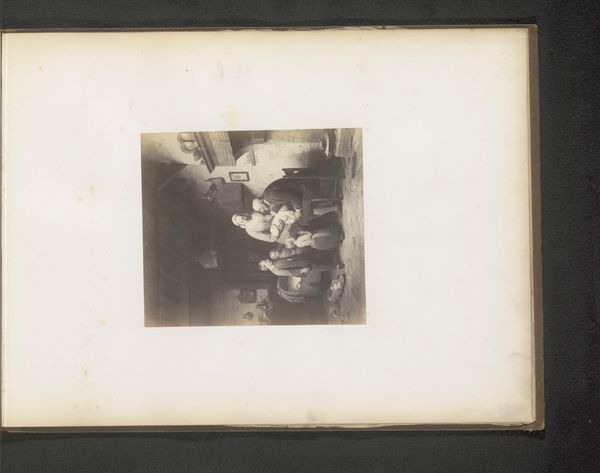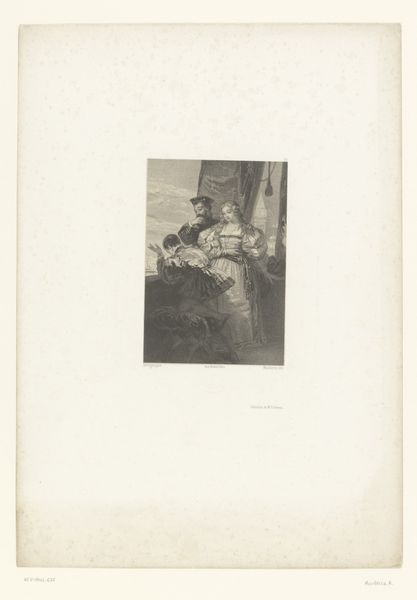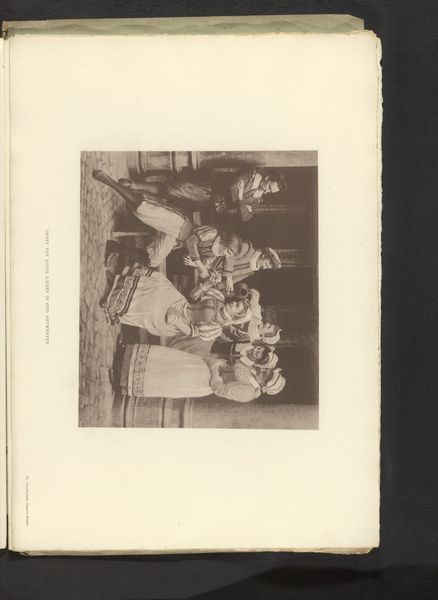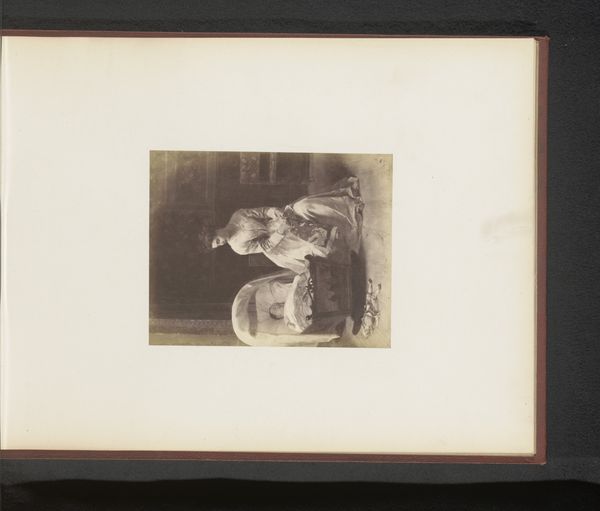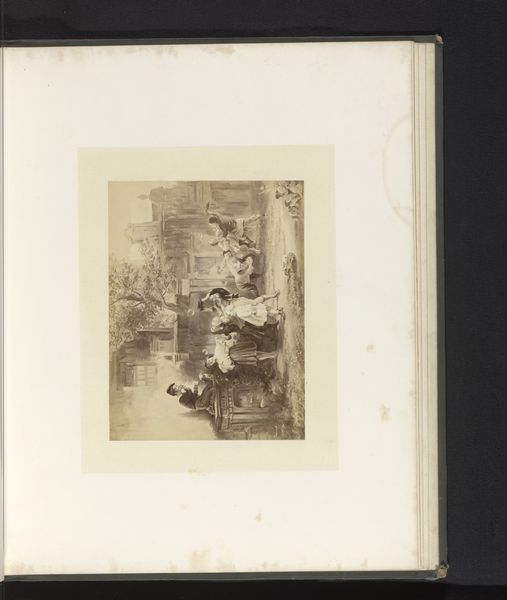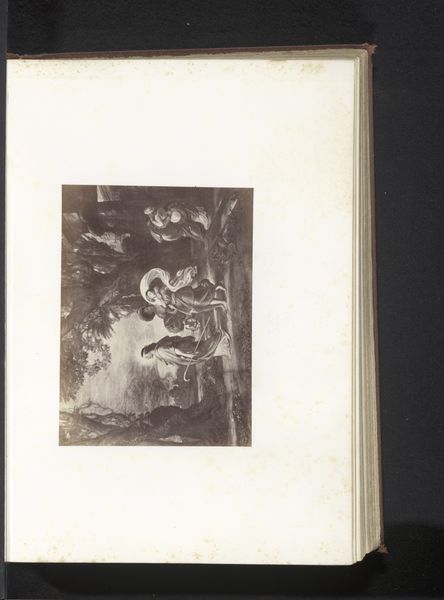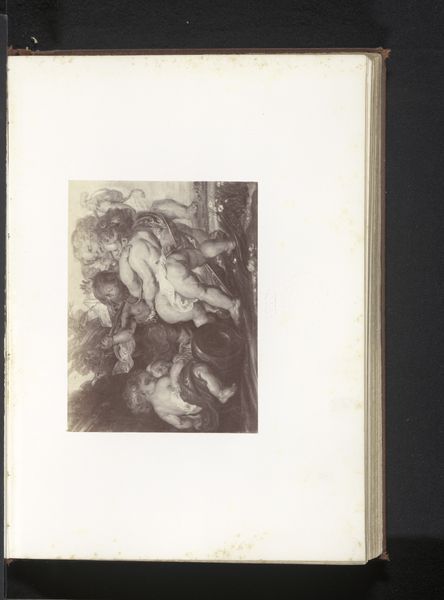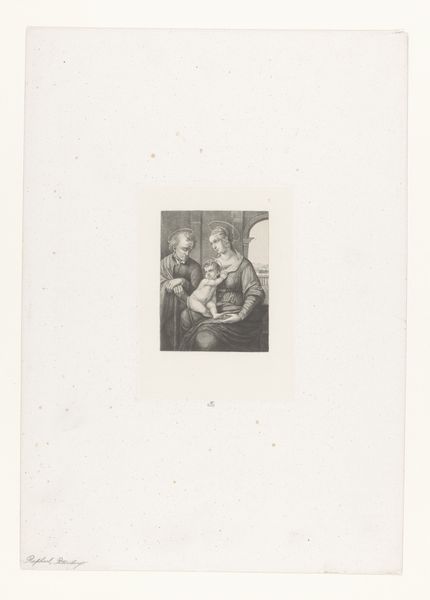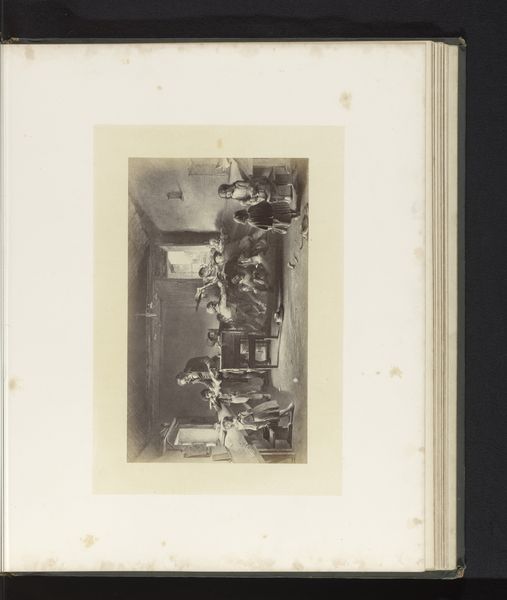
Fotoreproductie van het schilderij De drie zusters door Jacopo Palma il Vecchio before 1875
0:00
0:00
print, photography, gelatin-silver-print
#
portrait
# print
#
figuration
#
photography
#
gelatin-silver-print
#
history-painting
#
italian-renaissance
#
realism
Dimensions: height 173 mm, width 240 mm
Copyright: Rijks Museum: Open Domain
Curator: Here at the Rijksmuseum, we have a photograph titled 'Fotoreproductie van het schilderij De drie zusters door Jacopo Palma il Vecchio', predating 1875. It's a gelatin-silver print. What are your first thoughts? Editor: It strikes me as a very controlled image. The figures are beautifully posed but there’s a certain... distance. Like a study in idealized womanhood more than an intimate portrait. The black and white tones certainly enhance this feeling. Curator: The original painting by Palma Vecchio presents a rather fascinating instance of Renaissance portraiture viewed through a 19th-century lens of photographic reproduction. These reproductions circulated widely, shaping the perception of art and culture. It served as a means of disseminating artwork before modern printing technology became widespread. Editor: Absolutely. And this particular work allows us to question the dynamics of that dissemination. Who had access to this image, and what did it represent to them? How does the photographic medium change its perception, compared to seeing the painting itself? Considering issues of access is crucial; photography, theoretically, made art more accessible, yet socio-economic factors would still dictate who viewed it and where. Curator: A valid point, the transition from painting to photography influences the understanding. A painting, commissioned or displayed, served specific societal roles—signaling status, religious patronage, etc. Reproduction by photographic print transformed that purpose. What do we lose in the translation, and what is gained through increased distribution? Editor: In terms of the "gained," the photograph enables an objectification, the figures appear to be for sale or consumption. They don't own their own representation, but were subjects in a transaction in both versions: in the painting, their status as desired people of the nobility, and here as subjects for general consumption of wealth, beauty and power, and a standard against which female visitors measured themselves and others. Curator: Considering that women, historically, were often excluded from art spaces or were confined to domestic roles, these photo-reproductions played a part in disseminating notions of femininity and female archetypes that impacted social mores of the day. The very composition lends to discussions regarding standards of beauty within a patriarchal culture. Editor: Precisely! It invites reflection on what those standards are, how they were enforced, and who benefitted from their enforcement. So, while seeming innocuous, even romantic perhaps, it invites us to actively challenge assumptions surrounding female identity, history, and the politics of art. Curator: It's a layered interaction when we bring in history and context. Editor: Exactly. A quiet piece, that still has a lot to say about past, present, and even future power dynamics.
Comments
No comments
Be the first to comment and join the conversation on the ultimate creative platform.
